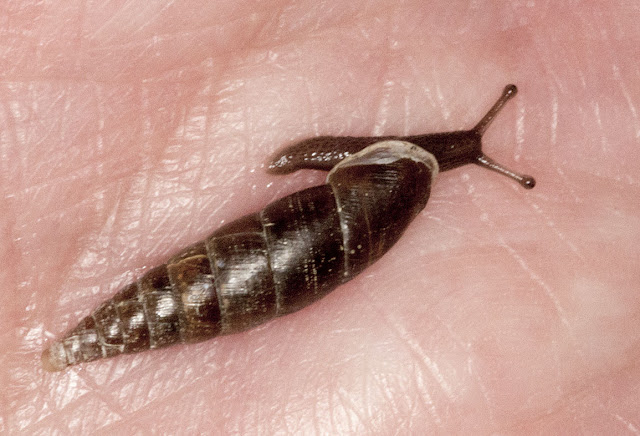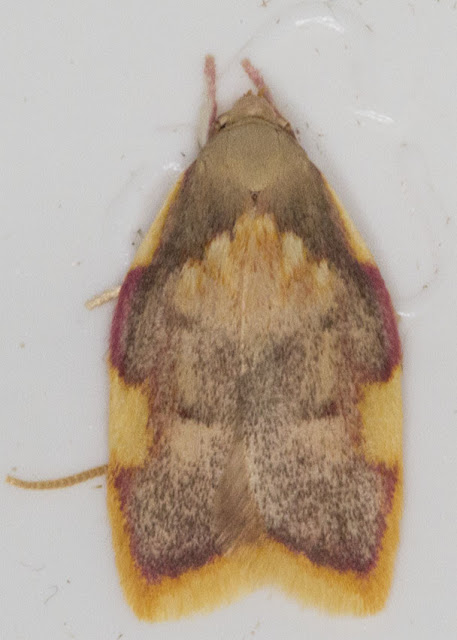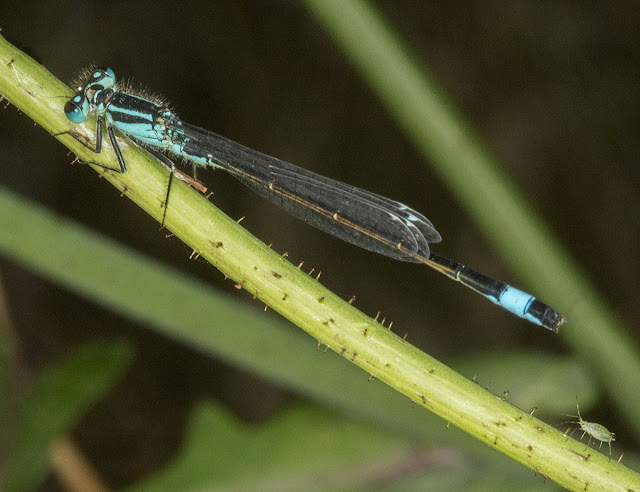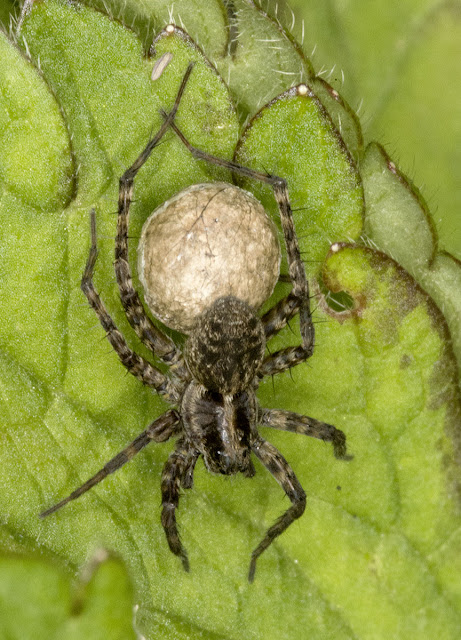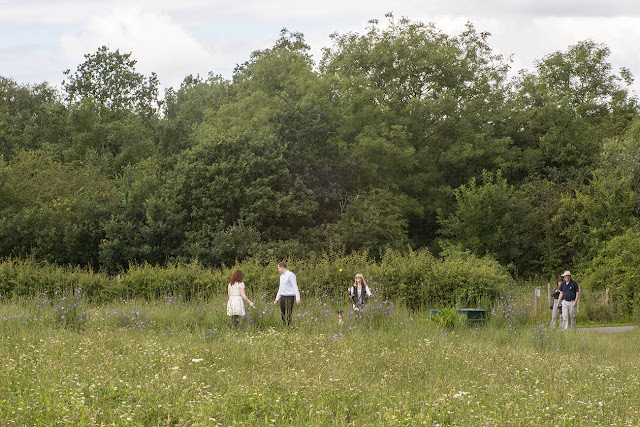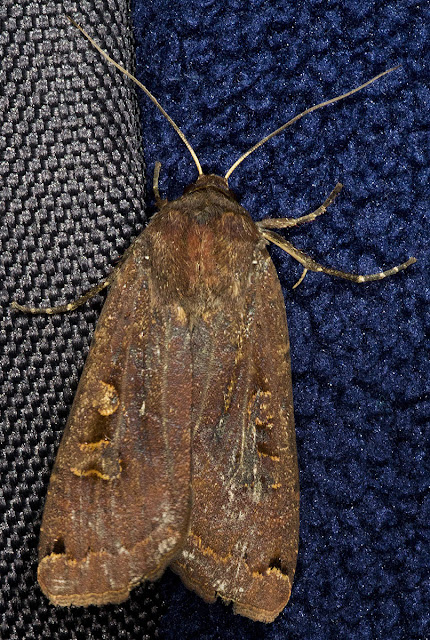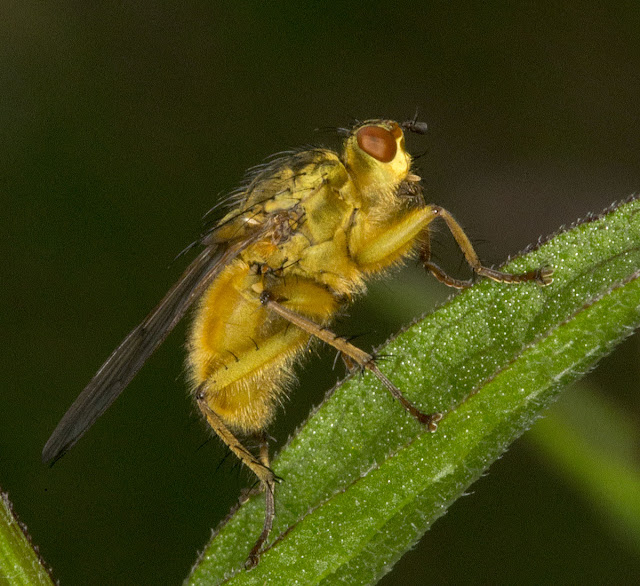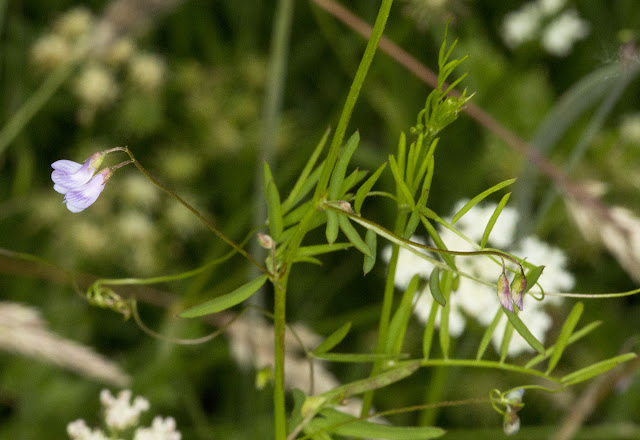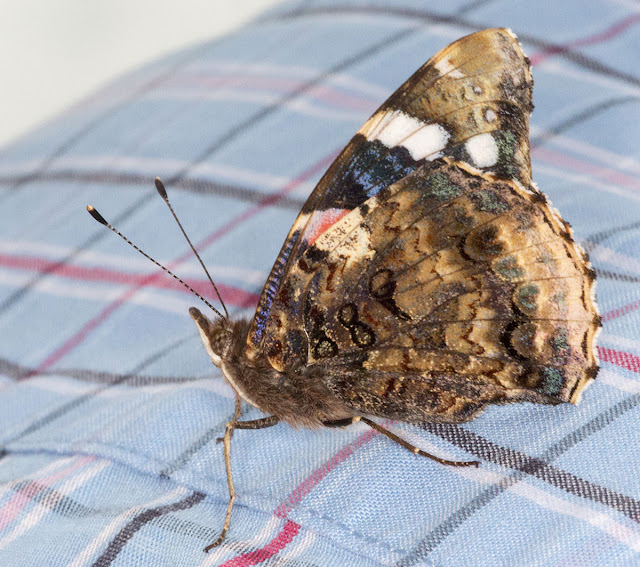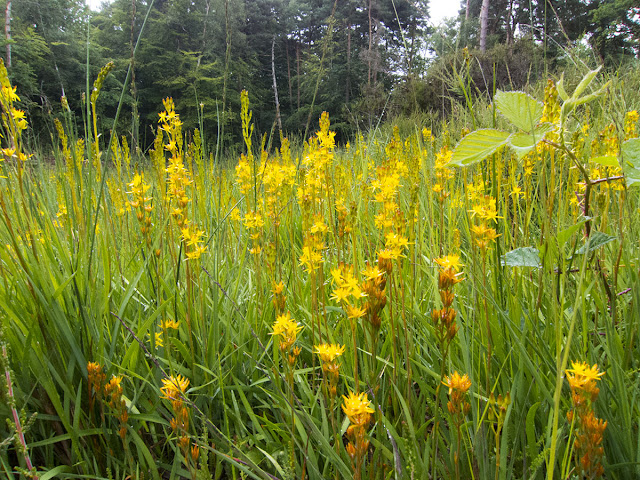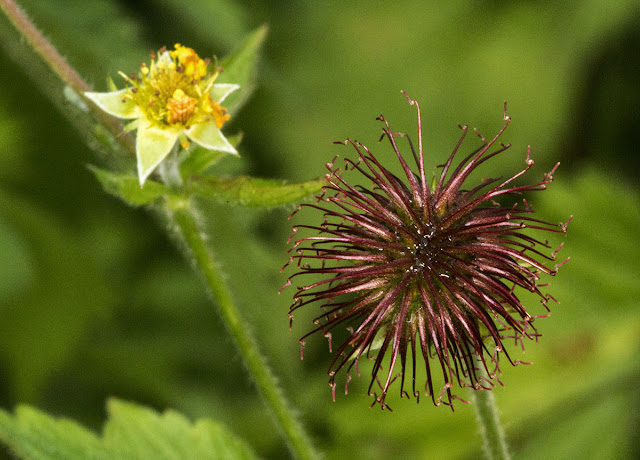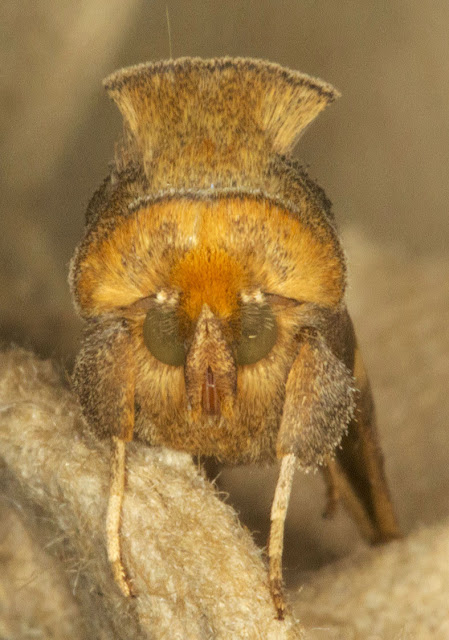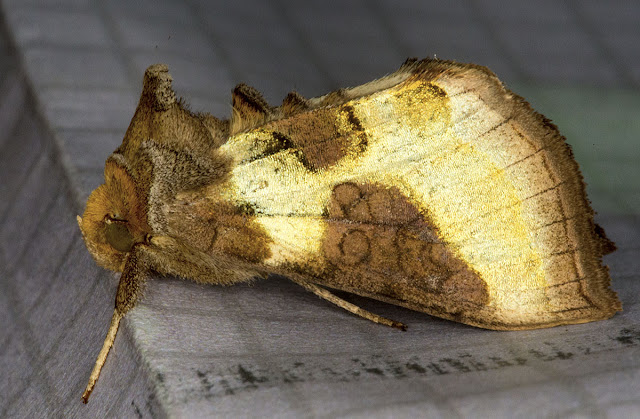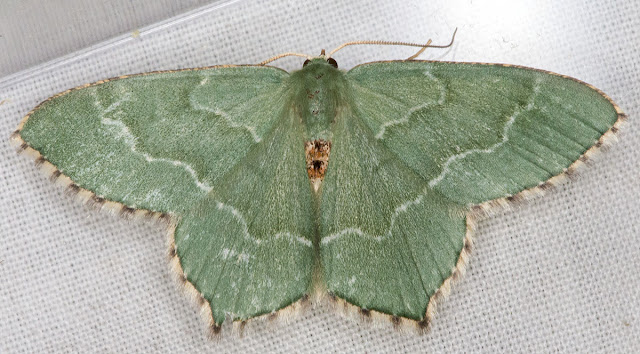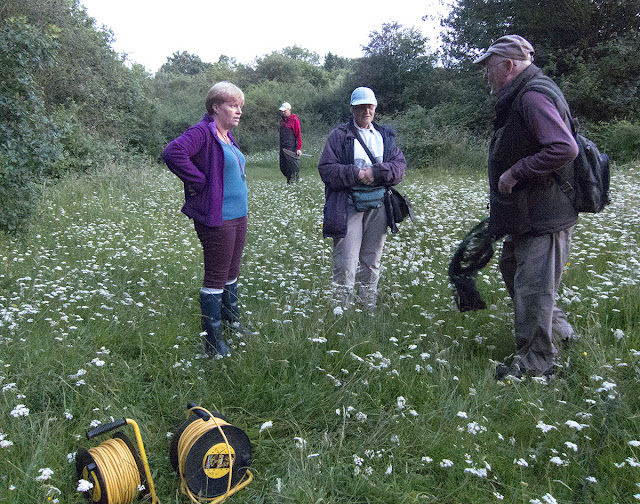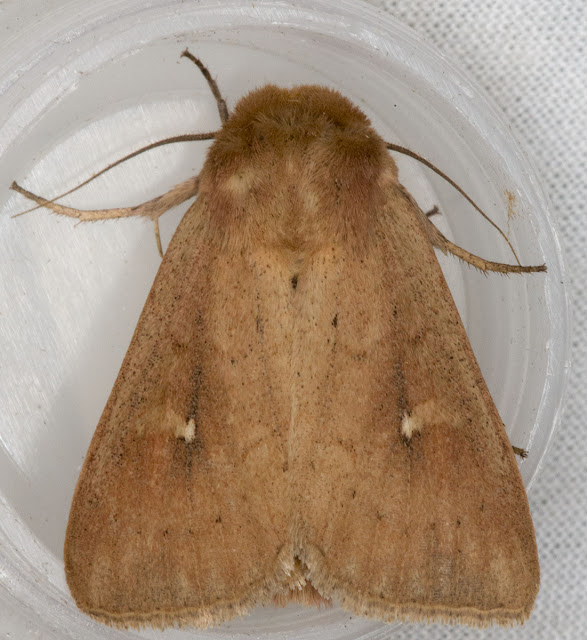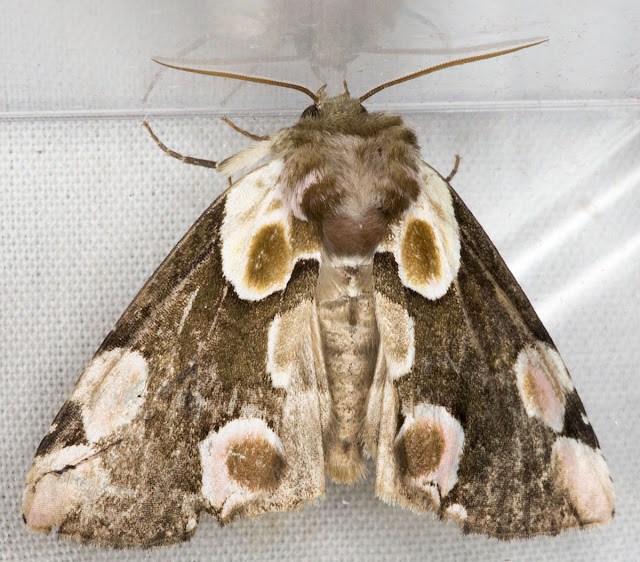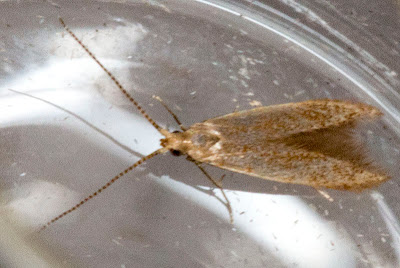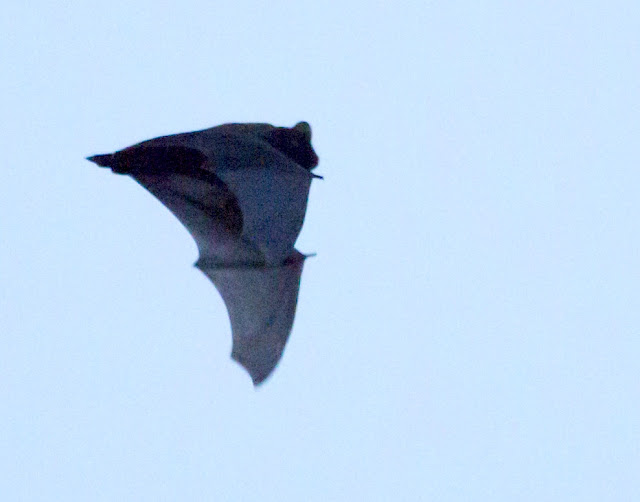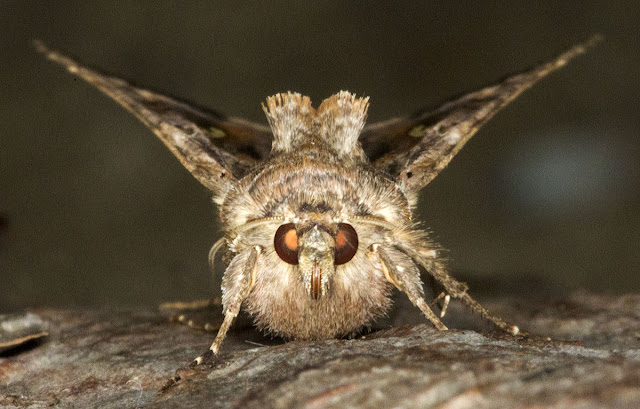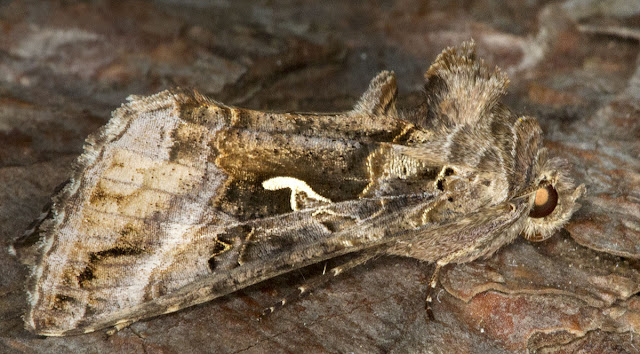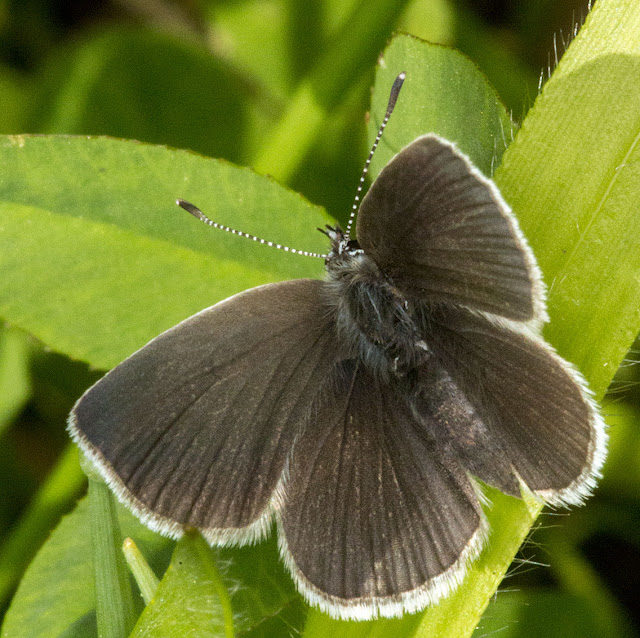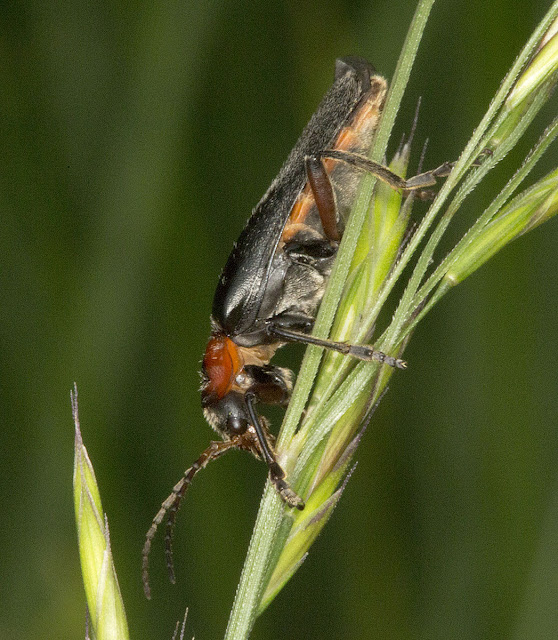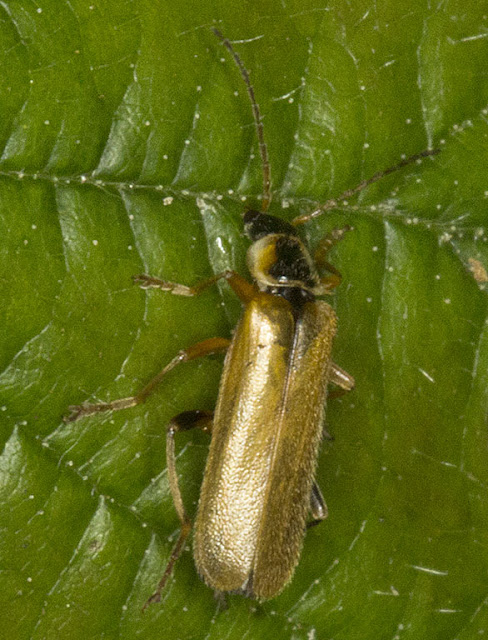 |
| Three moths of the genus Agrotis. |
Suppose you had these three moths in a trap one morning. Or, even more tricky, suppose you just had these photographs. Could you tell what species they are? There are three moth species you might find that look like this, all in the genus Agrotis.
It's not straightforward. All the main elements you might use to help identify them are the same. They rest with wings folded far back, the edges nearly parallel. They are a brownish-grey colour with very similar wing markings. And you know moth markings can sometimes be quite variable, so what can you rely on to tell these apart?
The three candidate species are known as the Turnip Moth, the Heart and Dart, and the Heart and Club. The fact that all of these have (roughly) heart-shaped and dart-shaped marks doesn't help.
Well, one thing that does help is their size. That's where you see the importance of photographing them against a measurable background. These shots aren't meant to be pretty, but useful, and the moths are all sitting on paper marked off in 5mm squares. (The paper is neutral grey, so that I can eliminate any colour casts while processing the photos.) So even though they all fill the same space on the screen, you can see that the moth in the middle is noticeable smaller than the others, and the left-hand one might just be the largest by a small amount.
If you look up the forewing lengths of these species you will find that they are variable, but there is a general size differential between the three. So you would suspect the smallest one of being a Heart and Club, the middle-sized one a Heart and Dart, and the longest one a Turnip Moth. But that's not enough to be sure.
Now look at their collars. Two of them have dark lines. The middle one not so dark as that on the right; it has a thin dark line with a less dark surround. That again is typical of the Heart and Club. So the middle moth is now fairly well identified.
The moth on the right has a thick black collar, which should make it a Heart and Dart. It looks like a monobrow from the front, but we can't see that view. But the collar on the left-hand moth seems to be missing some fur at just that point; could it be another Heart and Dart that is just getting a bit old and worn? Well, males of both the Turnip Moth and Heart and Club have antennae that are pectinate (comb-like) for about two-thirds of their length. No Heart and Dart moths have pectinate antennae. You can see the base of the right-hand moth's antennae and they are smooth. The others both have obvious comb-like structures. So neither of those could be a Heart and Dart, but the right-hand moth could. So the right-hand and left-hand moths are now also pretty well identified.
Another feature that is sometimes useful: The Heart and Dart's darts are usually solid, whereas those of the other two are not. Also, they are usually thinner and longer than those of the Heart and Club.
Taking all these factors into account, it's always worth checking over them again. These specimens can now be identified with some certainty from the photos. From left to right, male Turnip Moth (right size, no dark collar, pectinate antennae); male Heart and Club (right size, right sort of collar, pectinate antennae); Heart and Dart (right size, right sort of collar, plain antenna, right sort of darts).
So, moth identification. Fun, isn't it?


